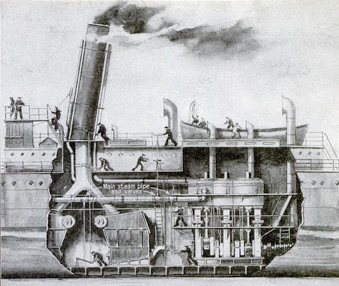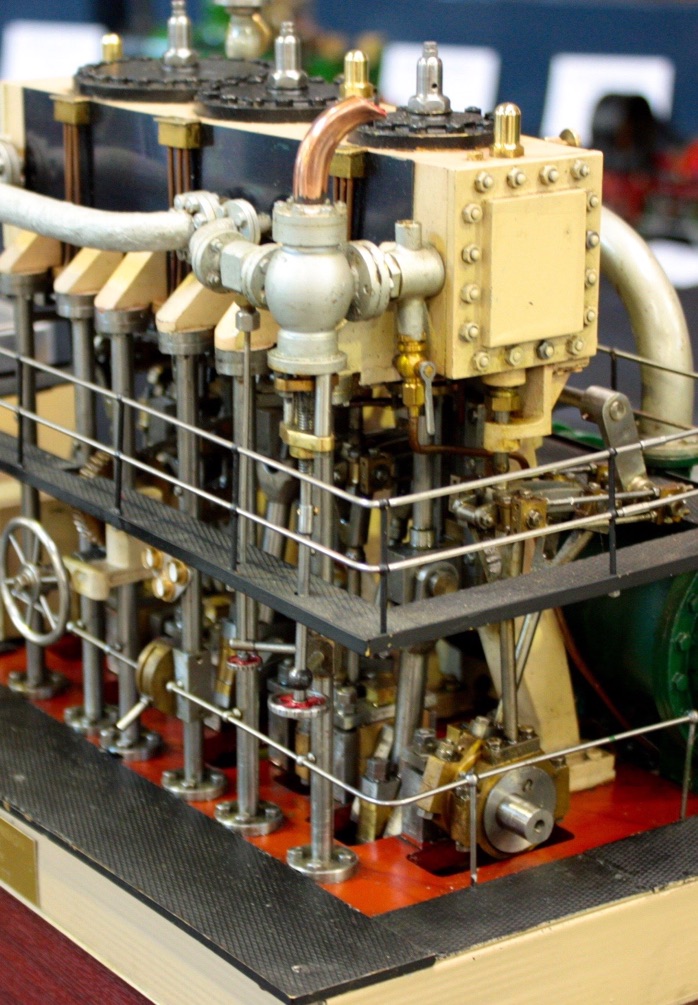


This impressive model, shown at Harrogate, is by S Naisbitt. It is a marine triple expansion steam engine.

A compound engine refers to a steam engine with any number of different-pressure cylinders, usually through two stages, i.e. those which operate cylinders at only two different pressures (or ‘double-expansion’ engines).
The triple-expansion engine is a compound engine
that expands the steam in three stages. It has three
cylinders operating at different pressures.
A quadruple-expansion engine expands the
steam in four stages, and so on. The first successful
commercial use was an engine built at Govan
by Alexander C. Kirk for the SS Aberdeen in 1881.
Multiple-expansion engine manufacture continued
well into the 20th century. All 2,700 Liberty ships
built by the United States during World War II were
powered by triple-expansion engines, as
capacity to build marine steam turbines was
focussed on the building of warships.















